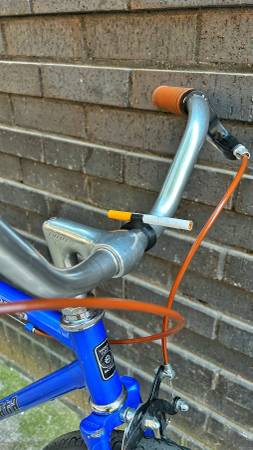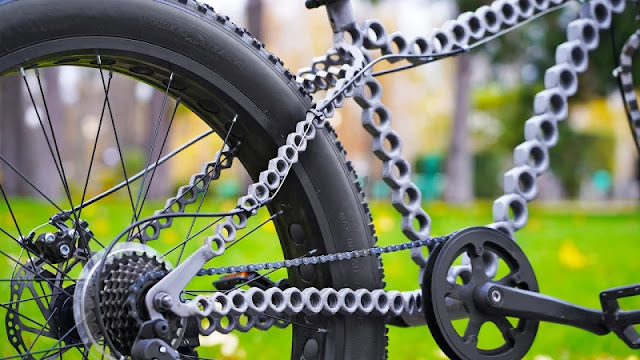Today is Labor Day in the U.S.A. I am going to talk about some people who make their livings on their bikes.
No, this isn't about professional bicycle racers. Rather, I am referring to messengers and delivery workers.
I was a New York City bicycle messenger for just over a year, in 1983-84. FAX machines were becoming fixtures in offices and other work (and, in a few cases, residential) settings; a decade would pass before the Internet would connect them. Still another decade or so would go by before documents like contracts that required signatures could be sent digitally.
Nearly four decades ago, most restaurant and other delivery workers rode bicycles; so did just about all messengers. The differences between and among us were in the kinds of bikes we rode. Some restaurant and pizzeria delivery workers pedaled specially-made industrial bicycles with fitted baskets, most of which were made by Worksman Bicycles, still located just a few miles from my apartment. Others--and some messengers--rode whatever they could get, from whomever they could. (It was common knowledge that if your bike was stolen, you should go to (pre-gentrified) St. Mark's Place where, shall we say, one didn't ask questions.) And then there were messengers who rode the then-newfangled mountain bikes or bikes that seemed newfangled to most people even thought they'd been around since the early days of bicycles. I am talking, of course, about fixed-gear machines.
Such was the case until well into the 2010s. These days, however, you never see a delivery worker on a pedal-only bicycle: They're riding e-bikes. The reason for that is, of course, that most are working, not for the restaurants themselves, but for app companies like DoorDash, who classify their deliverers as "independent contractors." That means those workers are paid--and their terms of employment depend on metrics the company keeps.
I, and most other messengers, were paid in the same way. The difference was that we weren't working for app companies that recorded our every move and turned the data into "metrics." If we got that contract or sample--or, in one case I recall vividly, a paining from a Soho gallery (Yes, the neighborhood hadn't yet become an open-air mall.) to Judy Collins (Yes, that Judy Collins!) in a timely fashion, we were considered "good" messengers and got more work.
As the wheels under delivery workers turned from pedal bicycles to eBikes, bicycle messengers disappeared. I rarely them anymore, even in the Financial District and other dense neighborhoods of Manhattan. Much of the reason for that is, of course, the digitization of documents. Not only does that mean much less work overall; it also means that are few urgent or "rush" deliveries. That, in turn, means customers are less willing to pay more than a couple of dollars to have, say, a sample of a neon hoodie brought to their door.
 |
| Photo by Cole Burston, for the Toronto Star |
I hope I don't sound like an old fogie (after all this is Midlife Cycling!) pining for "the good old days." But there is much I miss about the messengering milieu of four decades ago. For one, I was able to make pretty decent money--which is precisely what enabled me to move back to New York. For another, it was a job that people like me, a young misfit, could do. Finally, being an "independent contractor" meant that I was, well, independent: As long as the jobs I took on were done quickly, people didn't care about how I dressed (though I did try to be neat, as I occasionally entered professional offices) or, for that matter whether I was hung over or high.
OK, now I'll tell you about one of the dirty little secrets of the trade. In addition to consuming lots of pizza, pasta, rice and beans, french fries and other high-carb foods, we partook of, uh, certain herbal substances. I haven't smoked weed since, probably, a year or two after I stopped working as a messenger, but in those days, I smoked stuff I rolled myself. So did just about every other messenger I knew.
(One great thing about getting older is that the statute of limitations runs out on most non-capital offenses!)
I think that for food delivery workers, nearly all of whom are immigrants, there is a more serious consequence. Ebikes are far more expensive than regular bicycles. Few, if any, can pay for them up front. So, they are in debt, whether to the dealers who sold them the machines or to whomever loaned them the money.
 |
| Photo by Paul Frangipane, for Bloomberg News |
Oh, and even though the New York City Council ruled that delivery workers for app companies are, in fact, employees who are entitled to minimum wage, unemployment insurance, worker's compensation and other benefits, the companies are simply flouting the law because they know a worker who's in debt and doesn't speak English well or at all is in no position to fight them.
In short, the changes in delivery work--and the near-disappearance of messenger work--has, to whatever degree, contributed to the ever-widening gap between, not just the rich and poor, but also (and more importantly, I believe) between those who can gain a foothold in this economy and move up, and those who can't. I have to wonder what the young person I was--depressed and angry, unable to deal with office politics or over-entitled clients--would do today.































.jpg)